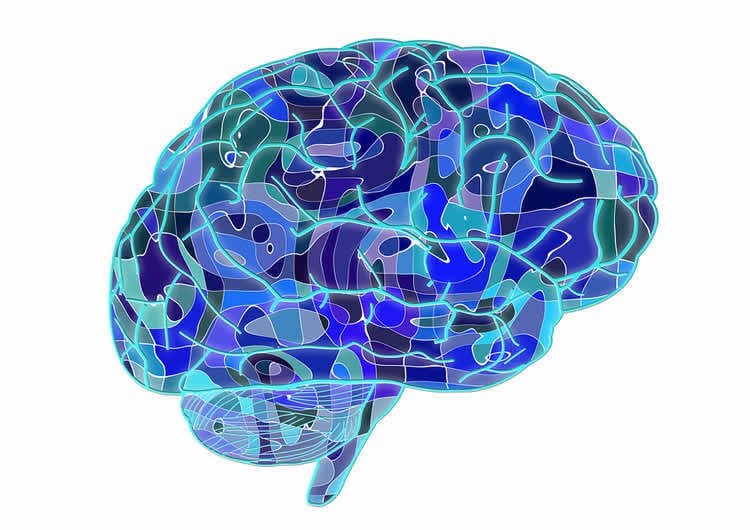Summary: Researchers report demyelination may not be as good an indicator of the progression of MS as previously thought.
Source: Queen Mary University of London.
Demyelination may not be as good an indicator of disease progression as previously thought.
A study by researchers from Queen Mary University of London establishes for the first time the extent of neuronal loss in the brain of a person with MS over their life, and finds that demyelination may not be as good an indicator of disease progression as previously thought.
By dissecting and analysing brains from nine people with MS and seven healthy controls using gold standard techniques, they found that the mean number of neurons was 14.9 billion in MS versus 24.4 billion in controls – a 39% difference.
The density of neurons in MS was smaller by 28%, and cortical volume by 26%, and they found that the whole brain was affected equally.
Importantly, the number of neurons was strongly associated with the thickness of the cortex, which is something that can be measured by MRI. The decline in volume of the cortex could therefore be detected in vivo and be used to predict neuronal loss in patients or measure neurodegeneration during clinical trials.

Lead researcher Klaus Schmierer said: “Given that we found no association between neuronal loss and demyelination, trying to detect demyelinating lesions in the cortex – an area of research strongly driven by the availability of high field MRI systems – may be of lesser importance than measuring cortical volume and getting on with early active treatment.”
As cortical neuronal loss is responsible for cognitive and other functions, which occur early in MS, the researchers say that to avoid neurodegeneration, early treatment is key.
Source: Joel Winston – Queen Mary University of London
Image Source: NeuroscienceNews.com image is in the public domain.
Original Research: Full open access research for “Neuronal loss, demyelination and volume change in the multiple sclerosis neocortex” by D Carassiti, D R Altmann, N Petrova, B Pakkenberg, F Scaravilli, and K Schmierer in Neuropathology and Applied Neurobiology. Published online April 18 2017 doi:10.1111/nan.12405
[cbtabs][cbtab title=”MLA”]Queen Mary University of London”Study Establishes Extent of Neuron Loss in Brains of People With Multiple Sclerosis.” NeuroscienceNews. NeuroscienceNews, 10 May 2017.
<https://neurosciencenews.com/neuron-loss-ms-6634/>.[/cbtab][cbtab title=”APA”]Queen Mary University of London(2017, May 10). Study Establishes Extent of Neuron Loss in Brains of People With Multiple Sclerosis. NeuroscienceNew. Retrieved May 10, 2017 from https://neurosciencenews.com/neuron-loss-ms-6634/[/cbtab][cbtab title=”Chicago”]Queen Mary University of London”Study Establishes Extent of Neuron Loss in Brains of People With Multiple Sclerosis.” https://neurosciencenews.com/neuron-loss-ms-6634/ (accessed May 10, 2017).[/cbtab][/cbtabs]
Abstract
Neuronal loss, demyelination and volume change in the multiple sclerosis neocortex
Aims
Indices of brain volume (grey matter, white matter, lesions) are being used as outcomes in clinical trials of patients with multiple sclerosis (MS). We investigated the relationship between cortical volume, the number of neocortical neurons estimated using stereology, and demyelination.
Methods
Nine MS and seven control hemispheres were dissected into coronal slices. On sections stained for Giemsa, the cortex was outlined and optical disectors applied using systematic uniform random sampling. Neurons were counted using an oil immersion objective (x60) following stereological principles. Grey and white matter demyelination was outlined on myelin basic protein immuno-stained sections, and expressed as percentages of cortex and white matter, respectively.
Results
In MS, the mean number of neurons was 14.9 ± 1.9 billion versus 24.4 ± 2.4 billion in controls (p < 0.011), a 39% difference. The density of neurons was smaller by 28% (p < 0.001), and cortical volume by 26% (p= 0.1). Strong association was detected between number of neurons and cortical volume (p < 0.0001). Demyelination affected 40 ± 13% of the MS neocortex and 9 ± 12% of the white matter, however neither correlated with neuronal loss. Only weak association was detected between number of neurons and white matter volume.
Conclusion
Neocortical neuronal loss in MS is massive and strongly predicted by cortical volume. Cortical volume decline detected in vivo may be similarly indicative of neuronal loss. Lack of association between neuronal density and demyelination suggests these features are partially independent, at least in chronic MS.
“Neuronal loss, demyelination and volume change in the multiple sclerosis neocortex” by D Carassiti, D R Altmann, N Petrova, B Pakkenberg, F Scaravilli, and K Schmierer in Neuropathology and Applied Neurobiology. Published online April 18 2017 doi:10.1111/nan.12405






